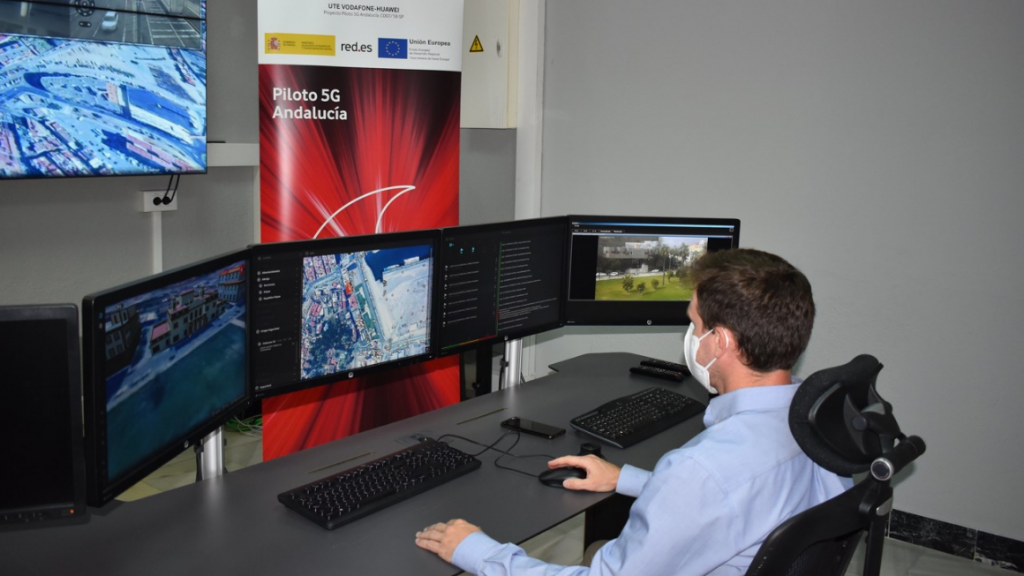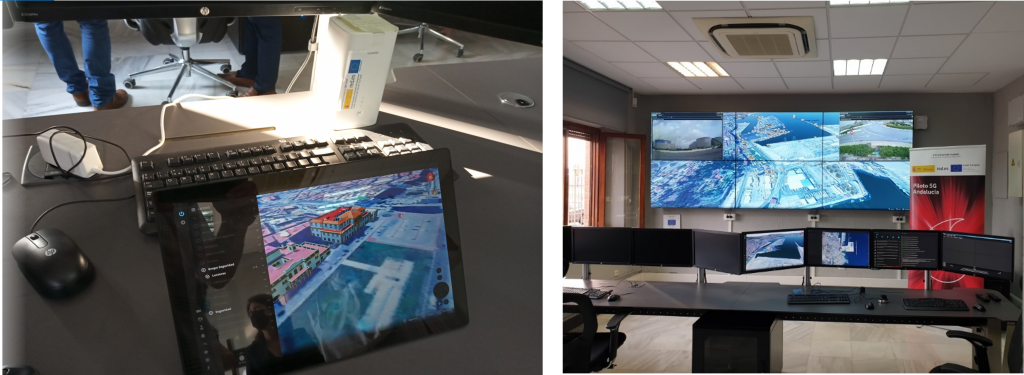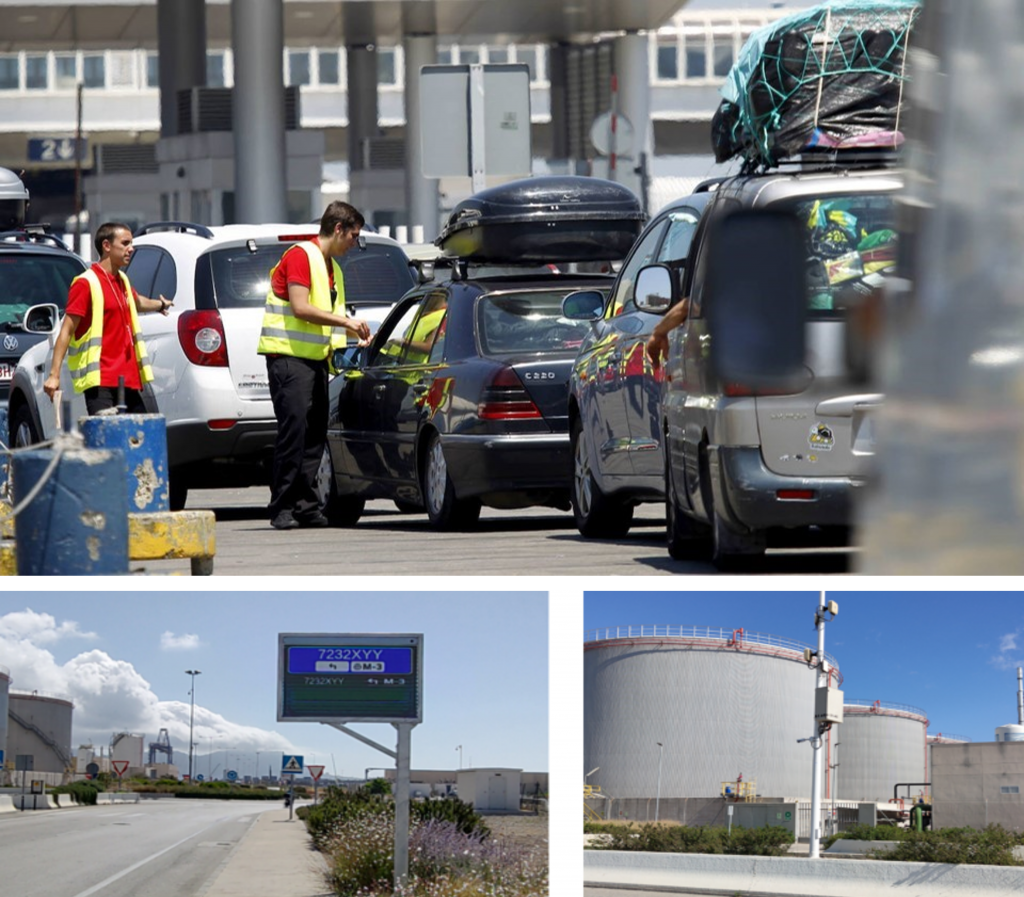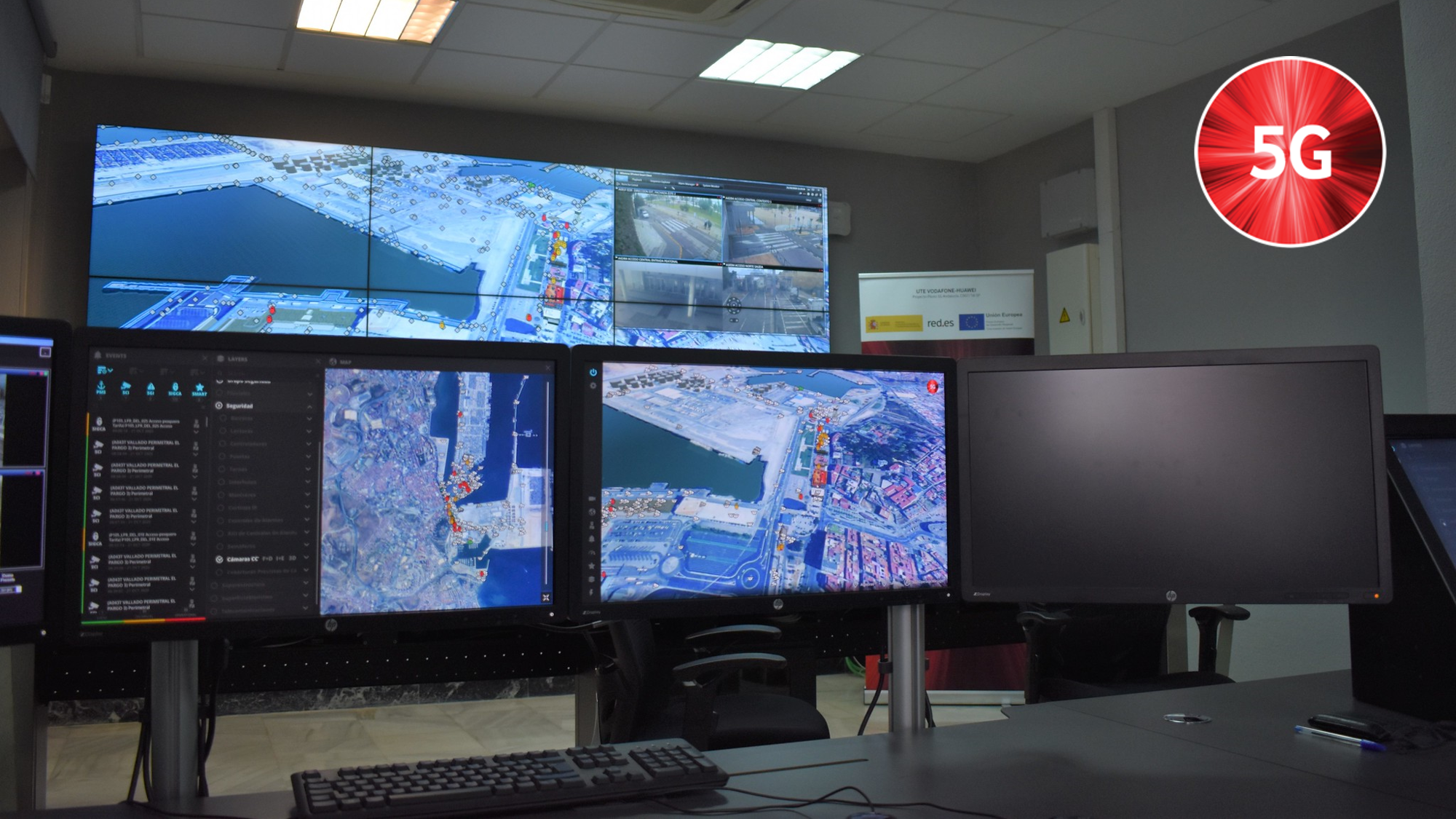Summary:
This project is included in the initiative “Pilot 5G Andalucía” led by the Ministry of Economic Affairs and Digital Transformation through the website www.red.es, and currently being developed by Vodafone and Huawei. The project applies to 33 examples of use in industries such as energy, smart cities, tourism, agriculture, healthcare and dependency, security, emergencies and defence, society and digital economy.
The aim of the project, in which the Port of Algeciras is included in a consortium headed by Vodafone spain and Huawei Technologies Spain is to test through 5G technology new technological capabilities of infras-tructures,
and to discuss how to support innovative applications within the scope of the port security, operations and infrastructures.
To do this, a special 5G network deployment will be carried out that will cover all the facilities and areas of the port in order to evaluate, by putting into practice two use cases, whether 5G technology can contribute to speed up and optimise port operations.


The the first use-case, called «5G Port», was created with the intention of modernising and enhancing the existing information, protection and security systems of the port, strengthening their pervasiveness, agility and diversity, thanks to the benefits resulting from the implementation of a 5G network. More particularly, the pilot project aims to improve
aspects within the following scopes:
- Ongoing input of high-resolution content transmitted through mobile cameras added to the existing CCTV, specially intended for critical cases and without detriment to other services.
- Integration of high-quality (4k) cameras to the existing imaging system, to transmit video in real time from fixed angles, as well as in motion.
- Extension of the services offered by the SG3iEV platform to the onsite staff by making it available while moving, and by using Augmented Reality (AR) to superimpose computer-generated, geolocated information on each employee’s real location and in real time.
- Completion of synchronised maintenance tasks using bi-directional streaming of video and audio in real time. At the control centre, the technician on duty will be able to provide guidelines and orders in graphic format that will be displayed on the employees’ AR glasses. The former will also view the ‘augmented’ information in the local environment.
In addition to the afore-mentioned advantages granted by 5G technology, faster responses are delivered by the onsite staff members. This notably contributes to simplify and add flexibility to their working method.

With regard to the the second use-case within the pilot project, called “Real-time recognition system for security environments”, proposes to develop a guidance and support system for passengers who visit the Port of Algeciras, specially when OPE takes place. The purpose is to find synergy with the Multi-access Edge Computing (MEC) systems
from the 5G network.
This system proposes the development of automated recognition of registration numbers in real time in order to provide customised information and guidance to passengers when visiting certain areas of the port. The application of this feature would help solve logistic and organisational issues in a scenario characterised by mass influx situations each year during OPE.


The ultimate goal of the project is to assess whether 5G technology can contribute to speed up and optimise operations, security and protection systems at the port. To this end, the development of both examples of use would help reach the following specific objectives:
- Optimisation of port controls thanks to seamless and high-quality video available, as well as an increased number of cameras, without detriment of these or other coexisting communications.
- Improved response times and more efficient resolution of issues, combined with onsite monitoring via access to technical data from various systems, from anywhere in the port and in real time. This offers a more complete, dynamic and instant view of all relevant aspects (ships, infrastructures, channels, etc.) in order to increase the autonomy and productivity of the staff.
- Improved precision and broadened application of the advantages of remote assistance by specialised technicians to onsite staff, through bidirectional transmission of audio and video in real time.
- Improved information systems available for passengers in order to manage and optimise the movement of vehicles within the port.
The project’s innovation:
- Implementation of a multi-platform system for the comprehensive management of facilities/infrastructure in a virtual environment (product innovation).
- Use of the enhanced Mobile Broadband (eMBB) service, provided by the 5G network, to ensure the necessary resources for uploading and downloading all the information required for the comprehensive management of the port in mobility, its visualisation enriched with Augmented Reality, the real-time broadcasting of high-quality video from the mobile units dedicated to security and surveillance and the establishment of remote video and Augmented Reality sessions.
- Achieving low latency (uRLLC – Ultra-reliable and low-latency communications) for a satisfactory experience and improved productive systems, especially when voice, video and augmented information interactions converge.
- Use of Multi-Access Edge Computing (MEC) contributing in two ways to the proper performance of Augmented Reality by moving image processing to the edge of the network and improving latency, and secondly, freeing the user device, such as glasses, from the computational work, reducing weight, consumption and cost of the final device used.
- Prioritisation of traffic through the Network Slicing service to guarantee the provision of the services of the cameras carried by the Port Police in emergency and network congestion scenarios.
The project’s product:
- Mobile version of the management platform that integrates the APBA surveillance systems (SCI, SGI, SIGCA) with the corporate GIS and 3D virtual representation of the port environment. This new version incorporates new advanced functionalities that allow remote assistance by specialised personnel to operators in the field through bi-directional video and audio communication in real time, as well as enriching the visualisation through the use of augmented reality.
- The equipment consists of two high quality cameras (4K), two tablets, two smartphones and augmented reality glasses.
- License plate reading system with cameras and mobile information panels for the detection and guidance of vehicles. Specifically, the system has been installed at 2 control points using 2 cameras and 2 panels.
- Management platform that allows the centralised configuration of itineraries according to the operations established and the destinations of the vehicles.
Applicability:
- Manage security systems and IT infrastructure.
- Control centre tasks/functions (Port Security).
- Management and maintenance work (Conservation).
- Traffic management in the port area.




Leave a Reply